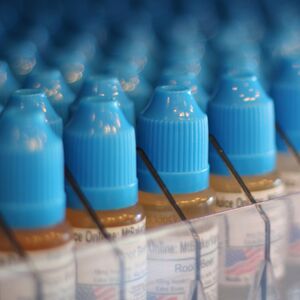Philip Morris International said yesterday that it had released its second Scientific Update for Smoke-Free Products, a regular publication on its research efforts to develop and assess a range of potentially reduced-risk alternatives to cigarettes.
‘This issue of the Scientific Update focuses on novel approaches to e-vapor products,’ the company said in a note posted on its website. ‘Technology and innovation can improve user experience and continuously enhance a product’s potential to present less risk of harm than smoking. The focus of the issue details the product design and manufacturing behind MESH, the new generation of e-vapor technology PMI is currently test marketing in Birmingham (UK). MESH is one of the four smoke-free product types developed by PMI, along with IQOS.’
Professor Manuel Peitsch, PMI’s chief scientific officer, was quoted as saying that PMI was working to transition progressively its existing cigarette business to smoke-free products. “By offering a diverse portfolio of innovative and scientifically substantiated alternatives, we believe we can accelerate the switching of an even greater number of adult smokers who would otherwise continue to smoke and have a positive impact on public health.”
Meanwhile, Michele Cattoni, PMI’s vice president Technology and Operations, was quoted as saying that technological innovation was at the heart of PMI’s efforts to create a smoke-free future. “We have developed an e-vapor product which, like our other smoke-free technologies, incorporates the highest manufacturing and design standards to ensure the consistency and quality of the generated vapor.”
PMI says that beyond the development behind PMI’s MESH proprietary technology, the Update provides an overview of its assessment to date. ‘The issue also covers the latest studies, key peer-reviewed publications and presentations at scientific conferences,’ it said. ‘It is an important complement to PMI’s ongoing efforts to share its latest science, which include a dedicated website (www.pmiscience.com).
‘PMI’s extensive research and assessment program is inspired by the well-recognized practices of the pharmaceutical industry and in line with guidance of the US FDA for Modified-Risk Tobacco Products (MRTPs).
‘The company today employs over 400 world-class scientists, engineers and experts who conduct rigorous research, including laboratory and clinical studies, as well as ground-breaking systems toxicology. The assessment program also includes studies on actual product use and correct understanding of product communications, as well as post-market research.’
The Scientific Update is at: https://www.pmiscience.com/news/smoke-free-products-scientific-update.








